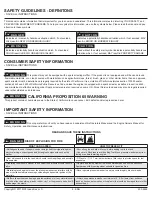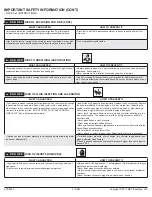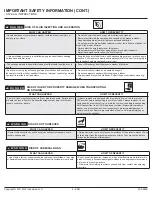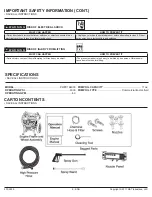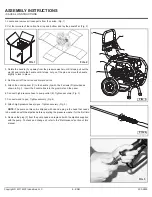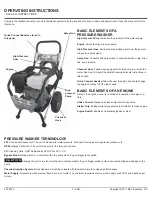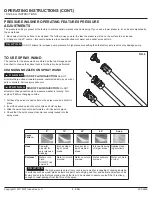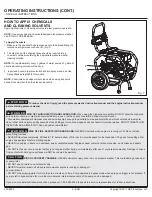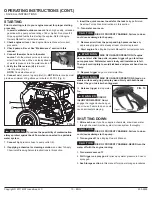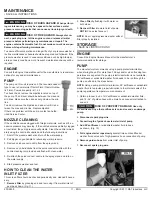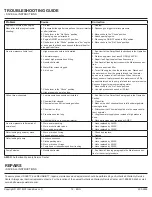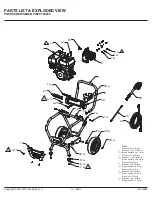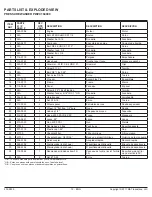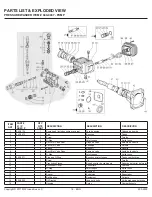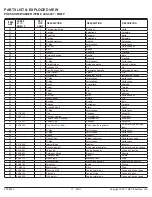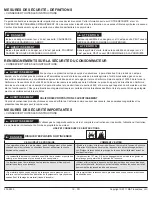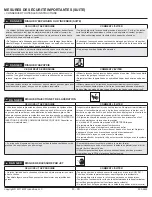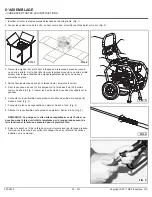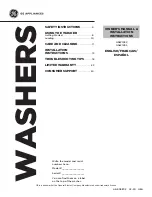
8 - ENG
200-2839
Copyright © 2011 MAT Industries, LLC
OPERATING INSTRUCTIONS (CONT.)
• SAVE ALL INSTRUCTIONS
PRESSURE WASHER OPERATING FEATURES PRESSURE
ADJUSTMENTS
The pressure setting is preset at the factory to achieve optimum pressure and cleaning. If you need a lower pressure, it can be accomplished by
these methods.
1. Back away from the surface to be cleaned. The further away you are, the less the pressure will be on the surface to be cleaned.
2. Change to the 40° nozzle – this nozzle delivers a less powerful stream of water and a wider spray pattern.
C A U T I O N
DO NOT attempt to increase pump pressure. A higher pressure setting than the factory set pressure may damage pump.
TO USE SPRAY WAND
The nozzles for the spray wand are stored on the top storage panel.
See chart to choose the correct nozzle for the job to be performed.
CHANGING NOZZLES ON SPRAY WAND
D A N G E R
RISK OF FLUID INJECTION.
Do NOT
direct discharge stream toward persons, unprotected skin, eyes or any
pets or animals. Serious injury will occur.
W A R N I N G
RISK OF FLUID INJECTION.
Do NOT
attempt to change nozzles while pressure washer is running. Turn
engine off before changing nozzles.
1. Pull back the quick connect collar on the spray wand and hold it in
place.
2. Insert the desired quick connect nozzle and hold in place.
3. Slide the quick connect collar forward until it locks into place.
4. Check that the quick connect nozzle is securely locked into the
spray
wand.
0°
15°
25°
40°
Soap
Spray
Pattern
Uses
Powerful
pinpoint for
very intensive
cleaning
Intense clean-
ing of small
areas
Intense clean-
ing of medium
areas
Intense cleaning
of larger areas
Applies clean-
ing solutions
Surfaces*
Metal or con-
crete
DO NOT use
on wood
Metal, concrete,
or wood
Metal, concrete,
or wood
Metal, concrete,
or wood
Metal, concrete,
or vinyl
*
C A U T I O N
The high pressure spray from your pressure washer is capable of causing damage
to surfaces such as wood, glass, automotive paint, auto striping and trim, and delicate objects such as
fl owers and shrubs. Before spraying, check the item to be cleaned to assure yourself that it is strong
enough to resist damage from the force of the spray.
FIG. 6


